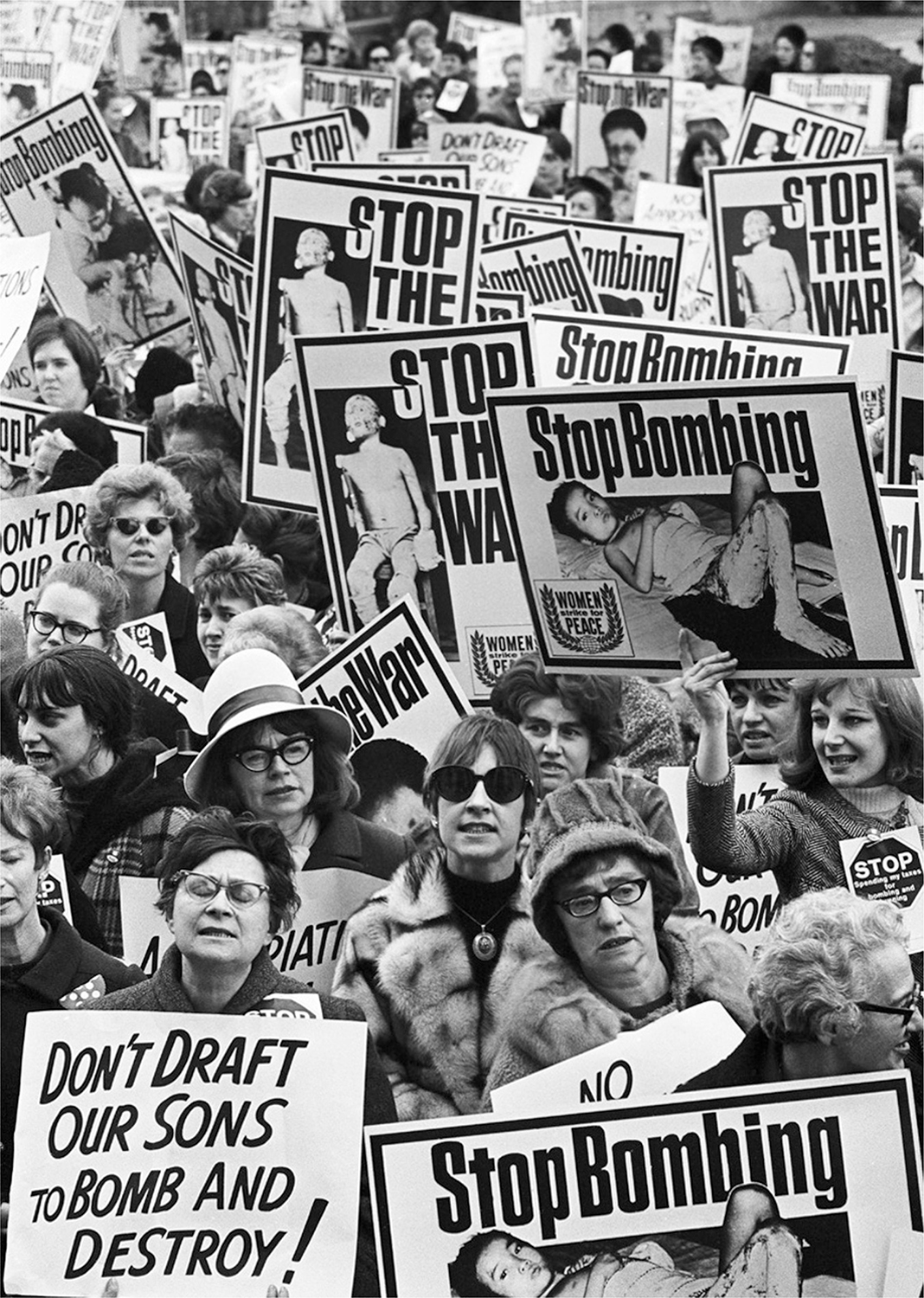The American Promise:
Printed Page 839
The American Promise Value
Edition: Printed Page 778
The Widening War at Home
Johnson’s authorization of Operation Rolling Thunder expanded the previously quiet doubts and criticism into a mass movement against the war. In April 1965, Students for a Democratic Society (SDS) recruited 20,000 people for the first major antiwar protest in Washington, D.C. Thousands of students protested against Reserve Officers Training Corps (ROTC) programs, CIA and defense industry recruiters, and military research projects on their campuses. Environmentalists attacked the use of chemical weapons, such as the deadly Agent Orange.
Antiwar sentiment entered society’s mainstream. By 1968, media critics included the New York Times, the Wall Street Journal, Life magazine, and popular TV anchorman Walter Cronkite. Clergy, businesspeople, scientists, and physicians formed their own groups to pressure Johnson to stop the bombing and start negotiations. Prominent Democratic senators urged Johnson to substitute negotiation for force.
Opposition to the war took diverse forms, including letter-

Many refused to serve. The World Boxing Association stripped Muhammad Ali of his heavyweight title when he refused to “drop bombs and bullets on brown people in Vietnam while so-
Opponents of the war held diverse views. Those who saw the conflict in moral terms wanted total withdrawal, claiming that their country had no right to interfere in a civil war and stressing the suffering of the Vietnamese people. A larger segment of antiwar sentiment reflected practical considerations—
The antiwar movement outraged millions of Americans who supported the war. Some members of the generation who had fought against Hitler could not understand younger men’s refusal to support their government. They expressed their anger at war protesters with bumper stickers that read “America: Love It or Leave It.”
By 1967, the administration realized that “discontent with the war is now wide and deep.” President Johnson used various means to silence critics. He equated opposition to the war with communism and assistance to the enemy. His administration deceived the public by making optimistic statements and concealing officials’ doubts about the possibility of success in Vietnam. Johnson ordered the CIA to spy on peace advocates, and without the president’s specific authorization, the FBI infiltrated the peace movement, disrupted its work, and spread false information about activists. Even the resort to illegal measures failed to subdue the opposition.